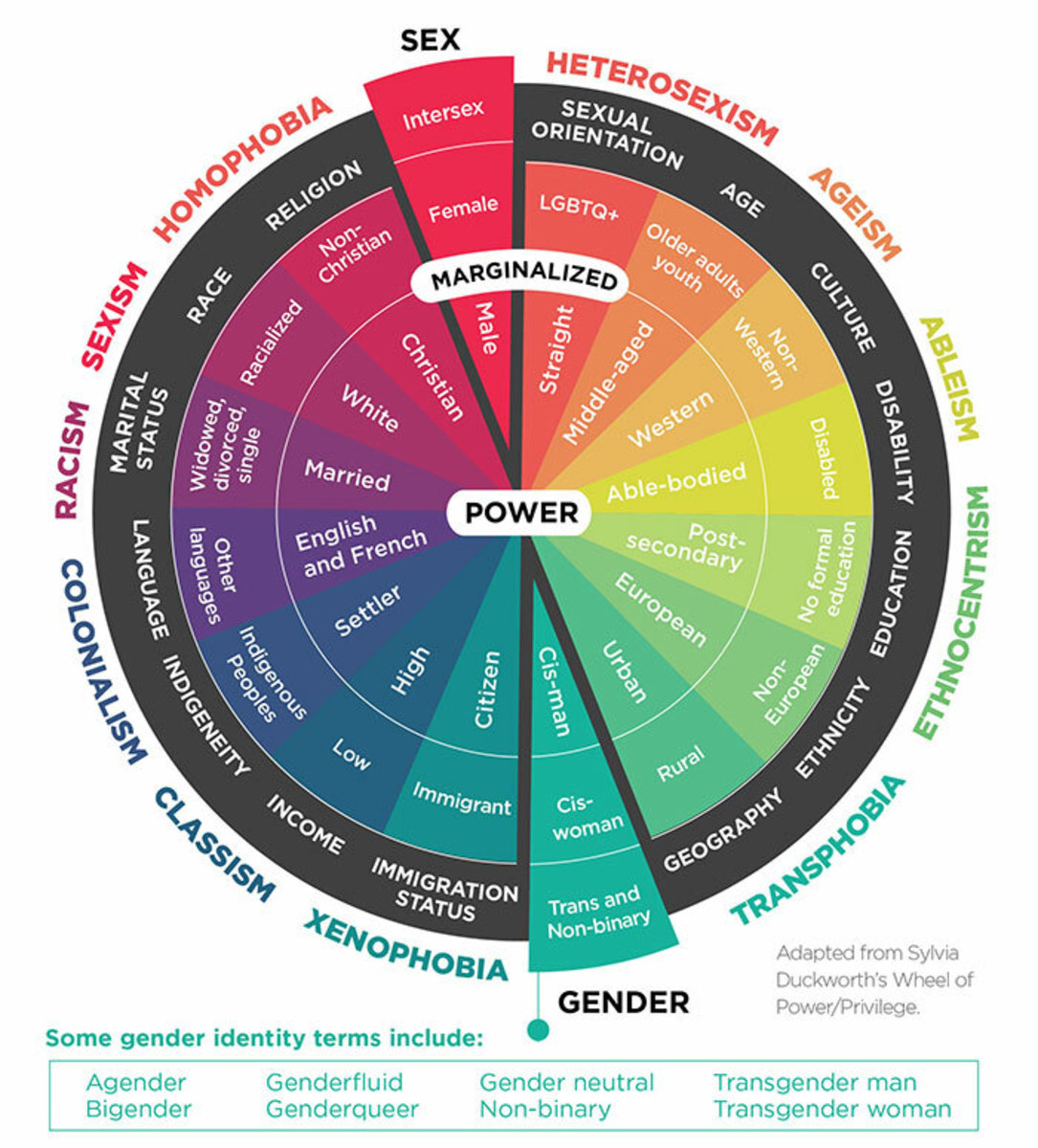Stigma and mental health problems: 3 elements to maximize the effectiveness of anti-stigma campaigns

Introduction
The lives of people identified as experiencing mental health problems are often blighted by stigma, those tagged with psychiatric disorders - such as “schizophrenia” or “depression” - suffering a disproportionate amount of discrimination, harassment and social exclusion (as discussed in an earlier hub:
But how can this form of stigma be eroded?
The three active ingredients of successful anti-stigma initiatives will be outlined as a way of illustrating how such campaigns can achieve maximum impact.
Reducing stigma: a government priority
In 2011 the United Kingdom government published a policy document entitled, No Health Without Mental Health (1) that highlighted a reduction in stigma as one of its six healthcare priorities. Formal recognition of the stigma associated with mental health problems has spawned a number of comprehensive initiatives across the world, usually involving collaborations between statutory and voluntary agencies, with the worthy goal of countering negative attitudes and discrimination towards people with psychiatric disorders. Examples of such campaigns include Time to Change (2) in the UK, and the Mental Health National Anti-Stigma Campaign (3) in the USA.
The success, or otherwise, of these anti-stigma projects will depend both on the content of the “education” provided and the process by which the information is shared with the general population. As described in the previous stigma hub, propagating the spurious message that mental health problems are the products of brain diseases will only exacerbate the discrimination that sufferers experience in their day-to-day lives.
For anti-stigma initiatives to be successful, three broad principles need to be incorporated into the educational process. Each of these will now be described.
Anti-stigma principle 1: emphasize the role of life experiences
By highlighting the powerful role that life experiences – childhood abuse, poverty, living in threatening environments, bereavements, relationship break-ups and unemployment – can play in the development of mental health problems, more compassionate attitudes will be nurtured within the general public.
There is research evidence to support this assertion. For example, four educational lectures to university students, that described how life’s tribulations can lead to the development of severe psychiatric problems, successfully tempered the students’ negative attitudes about dangerousness and unpredictability (4). A further study demonstrated that teaching the value of psychosocial approaches to psychosis (for example talking therapy and promoting valued roles) can reduce teenagers’ fears and the perceived need to keep their distance (5).
Anti-stigma principle 2: avoid the use of medical language
There is little evidence to support the notion that mental health problems are caused by underlying biological aberrations, in the same way as, for example, diabetes is the direct result of a lack of the insulin hormone. In addition, a number of studies have found that the use of diagnostic terms (such as “schizophrenic” or “bipolar”) leads to a range of disadvantages for those so labelled – [see previous hub for research review]. The use of diagnostic labels (akin to those for medical diseases) to describe human misery and suffering implies that these problems are caused primarily by biological aberrations, an assumption that is known to promote stigma.
Anti-stigma initiatives would therefore be more successful if they minimized the use of medical terminology, reducing reference to diagnostic labels (such as schizophrenia, bipolar disorder and panic disorder) and terms borrowed from the physical health setting (such as treatment and symptoms). Instead, neutral language could helpfully be deployed that describes both the sufferer’s current experiences and likely life events that may have contributed to their emergence – for example, ‘she is expressing feelings of worthlessness and self-hatred in the context of having been sexually abused as a child.’
When reference is made to a psychiatric diagnosis – given their omnipresence it would be impossible to avoid them altogether in a public education initiative – it could helpfully be qualified as representing a particular perspective rather than an actual description (6). For example, rather than referring to someone as “having schizophrenia”, a person could be referred to as being “distressed by voice-hearing and suspiciousness, experiences that some professionals might view as symptoms of schizophrenia”.
Anti-stigma principle 3: encourage contact between sufferers and the general public
Consistent with the ‘seeing is believing’ adage, promotion of direct contact between people suffering mental health problems and those who do not might be the most potent way of counteracting stigma.
There is much research evidence to support this premise. People who spend more time in day-to-day contact with the mentally ill tend to have more positive attitudes towards them (7). Also, all of the anti-stigma initiatives to date that achieved some positive change incorporated direct contact with psychiatric service users (8)(9)(10)(11)(12)13).
A straightforward, but effective, approach, one that could be easily adopted more widely, involved a young person who had been diagnosed with ‘schizophrenia’ discussing his experiences with a group of secondary school children (10). At one-month follow up, improvements were recorded in both the children’ attitudes towards people with schizophrenia and their inclinations to socially engage with them.
Another study (13) used video presentations rather than ‘live’ service users, in combination with educational material. Attitudes and desire for social distance softened among the recipients, with education followed by video presentation being the most effective order of delivery.
Consistent with the ‘seeing is believing’ adage, promotion of direct contact between people suffering mental health problems and those who do not might be the most potent way of counteracting stigma.
Conclusion
In conclusion, the most effective approach to reducing stigma comprises direct interactions with people with lived experience of mental health problems together with a psycho-education programme that gives appropriate emphasis to the role of life adversities, each element being delivered with minimal use of medical terminology.
References
(1) Department of Health (2011). No health without mental health: a cross-government mental health outcomes strategy for people of all ages. London: HMSO.
(2) http://www.time-to-change.org.uk/
(3) https://www.nami.org/Content/NavigationMenu/Take_Action/Fight_Stigma/NASC_Fact_Sheet.pdf
(4) Read, J. and Law, A (1999). The relationship of causal beliefs and contact with users of mental health services to attitudes to the ‘mentally ill’. International Journal of Psychiatry, 45, 216–229.
(5) Campbell, M., Shryane, N., Byrne, R. & Morrison, A.P. (2010). A mental health promotion approach to reducing discrimination about psychosis in teenagers. Psychosis: Psychological, Social and Integrative Approaches.
(6) Boyle, M. (2013). The Persistence of Medicalisation: Is the presentation of alternatives part of the problem? In S. Coles, S. Keenan & B. Diamond (Eds.), Madness Contested: Power and Practice (pp 4 – 22). PCCS Books.
(7) Read, J. and Harre, N. (2001). The role of biological and genetic causal beliefs in the stigmatisation of ‘mental’ patients. Journal of Mental Health, 10, 223 – 235.
(8) Corrigan, P.W., Rowan, D., Green, A., Lundin, R., River, P., Uphoff-Wasowski, K. & White K. (2002). Challenging two mental illness stigmas:personal responsibility and dangerousness. Schizophrenia Bulletin 28, 293–309.
(9) Couture, S & Penn, D. (2003). Interpersonal contact and the stigma of mental illness: a review of the literature. Journal of Mental Health, 12(3), 291-305.
(10) Schulze, B., Richter-Werling, M., Matschinger, H., Angermeyer, M.C. (2003). Crazy? So what!? Project weeks on mental health and illness. Their effect on secondary school students_ attitudes towards people with schizophrenia. Acta Psychiatr Scand 107, 142–150.
(11) Pinfold, V., Toulmin, H., Thornicroft, G., Huxley, P., Farmer, P. & Graham, T. (2003). Reducing psychiatric stigma and discrimination: evaluation of educational interventions in UK secondary schools. British Journal of Psychiatry, 182, 342-346.
(12) Pinfold, V., Thornicroft, G, Huxley, P. & Farmer, P. (2005). Active ingredients in anti-stigma programmes in mental health. International Review of Psychiatry, 17(2), 123 – 131.
(13) Chan, J.Y.N., Mak, W.W.S. & Law, L.S.C. (2009). Combining education and video-based contact to reduce stigma of mental illness: “The Same or Not the Same” anti-stigma program for secondary schools in Hong Kong. Social Science & Medicine, 68(8), 1521-1526.








